Over the past 600 million years mother nature has installed plenty of natural wonders in Morocco. Lunar granite landscapes, enchanted gorges, high waterfalls, adventurous caves and 400 million year old fossil grave yards. The film "Natural wonders of the Maghreb" takes you on an expedition through time, illustrating and explaining the various landscapes of Morocco and their geological origin. When we finally arrive back home, you will have discovered a new dimension of this fine Maghrebinian country.
Morocco's impressive earth history is best experienced on a round trip leading to the top natural attractions. Preferrably in a 4x4 of course. However, before you depart we want to provide you with a geological toolbox know-how. Because our eyes will only see what we already know. The red points on the map below mark the locations of the natural attractions featured in our DVD-expedition. Click on them to learn more about them. Or if you want to read the story in full from the very beginning click here.
Granites of Tafraoute
A bizarr lunar landscape in a remote valley of the eastern Anti Atlas. 550 million years ago hot granitic melts migrated deep under the earth surface in this region. Several large continental blocks collided to form Africa. During the crash intense heat developed and rocks began to melt. Today wind and water have sculptured the granites of Tafraoute into dramatic shapes. Rock needles and pillows capture our imagination.
|
|
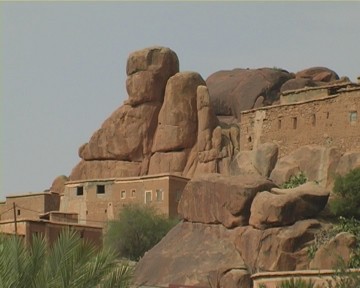 |
Algal mats near Ouarzazate
Eventually Africa was born and the forces of the deep faded away. The southern continents of the earth (including Africa) were interconnected to form the Gondwana superplate. Life was still little developed and the sea that covered Morocco was full of "algal" mats that consisted of cyanobacteria. Large parts of the Anti Atlas today are formed by the fossilized remains of this slime.
|
|
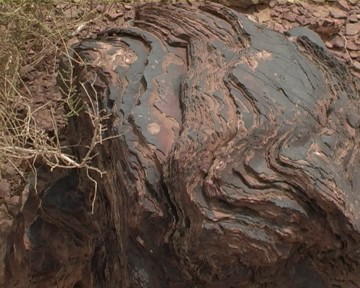 |
Ordovician Glaciation
440 million years ago it became in Morocco, which was located near the south pole during those times. Within a few thousands of years a gigantic ice cap formed over North Africa and the Sahara. The glacial scratches are preserved til today and can be admired in the mountains in the Tazzarine - Zagora area.
|
|
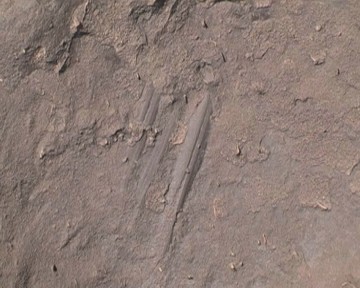 |
|
Silurian graptolithic shales in the Anti-Atlas
200.000 years later the glacial era was over - the ice began to melt. Huge amounts of fresh meltwater poured into the sea pushing the sea level ever higher. On the oxygen-deprived sea floor a stinky black goo was laid down. A rain of graptolite corpses sank down from the better oxygenated upper water layers into the mud. The animals make attractive targets for fossil hunters today.
|
|
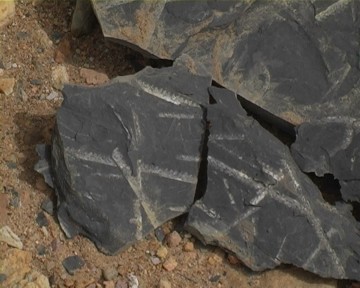 |
Orthoceras limestones near Tazzarine
Other animals entered the scene slightly later. Squid-like "straighthorns" - orthoceras. Like swimming arrows they roamd the Morocan Silurian seas. Their remains form the basis for the famous fossil industry of the twon of Erfoud. Here the fossil-rich limestone is processed and turned into tables, bathtubes and floor panels that are exported worldwide.
|
|
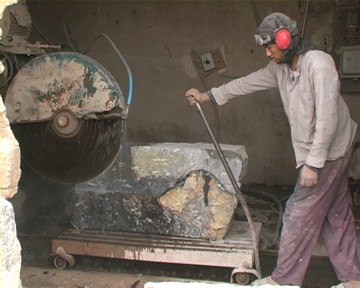 |
Mud mounds near Erfoud
Not far from Erfoud a group of rounded limestone humocks can be found, a view not too different from that 400 million years ago (however then only visbile for divers...). The Hamar Lakhdad mud mounds formed in teh sea above volcanic hot springs that provided ample nutrients and energy for the builders of the mounds.
|
|
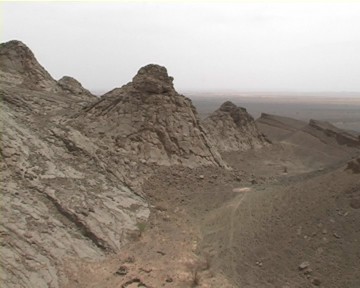 |
200 million year old red river sediments in the Argana Valley
Eventually the sea retreated, triggered by the continental collision of Morocco and North America. Morocco was uplifeted and folded. The newly formed mountains, however, quickly were attacked by wind, temperature changes and water. The reddish debris from this destructive phase is preserved in the Argana Valley between Marakech and Agadir. At the time large river systems transported the sand and gravel away from the mountains towards the sea.
|
|
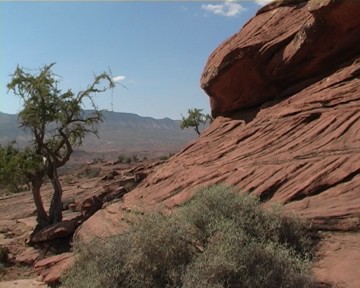 |
Friouato karst shaft in the Middle Atlas
When all debris had gone and the sea level had rosen Morocco was again flooded by the sea. A wide shelfal, tropical coral sea formed - the former sea floor today forms large parts of the High and Middle Atlas. Acidic ground water has meanwhile cut extensive cave systems into the mountains. One of the entrances to this subterranean labyrinth is the karst shaft of Friouato near the town of Taza.
|
|
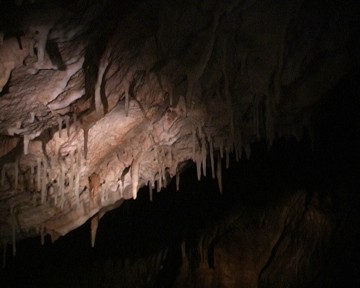 |
Cascades D'Ouzoud waterfalls in High Atlas
The highest and most beautiful water falls of Morocco are the Cascades d'Ouzoud, about two hours drive from Marrakesh. The fall is one hundred metres high and cascades down over several levels.
|
|
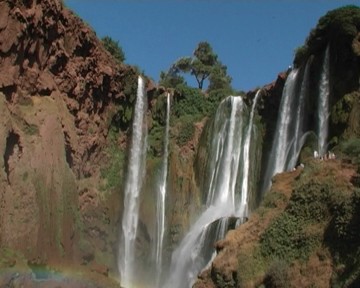 |
Dades- and Todra canyons in High Atlas
In other parts of the High Atlas rivers have cut deep canyon systems. The Dades Gorge is Morocco's Grand Canyon. The river already existed before the High Atlas was uplifted and therefore had enough time to react to any mountain-building movements by cutting ever deeper into the rocky substrate.
|
|
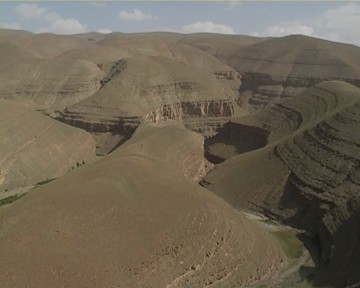 |
Blow Holes north of Agadir
Holes also play a major role along the Jurassic coast north of Agadir. When the wind gets up waves push the sea water into holes in the karstic limestone. The water is ejected on the other side as fountains, a spectacle reminiscent of Iceland's hot geysirs but here driven by the cold Atlantic waves alone.
|
|
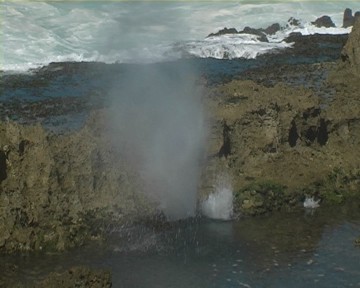 |
Amesfrane cliff in High Atlas
Towards the end of the Cretaceous Africa began to crash against Europe. The High Atlas, Middle Atlas and Rif Mountains were uplifted and folded. The debris of the newly formed mountains accummulated in valleys and hardened. The Amesfrane cliff deep inside the High Atlas is formed by this debris and mother nature has sculptured an impressive ornamented surface. Early travellers in the region compared the shape of the cliff with a church and named it "la Cathedral".
|
|
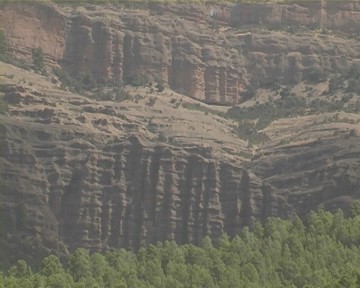 |
Merzouga sand dunes
Mountains do not last forever. The end product of the natural decay is quartz sand. The grains accumulate in huge sanddunes near the town of Erfoud and mark the western end of the gigantic sand sea systems in Algeria, Libya and Egypt. |
|
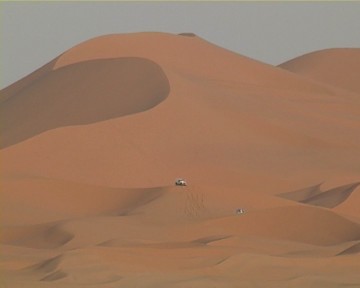 |
| |
|
|
| |
|
|
| |
|
|

